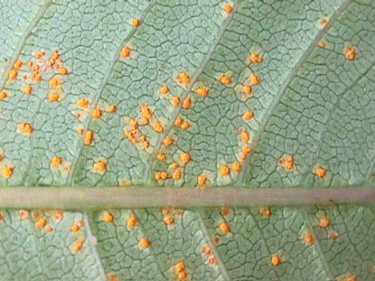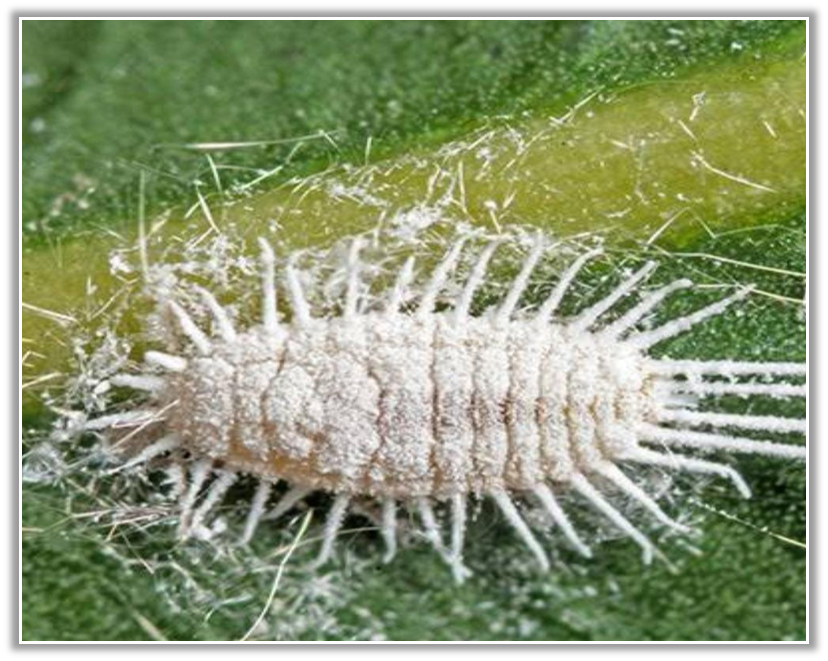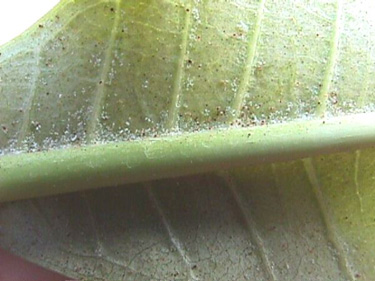
Host Plant : Plumeria
Causal organism : Coleosporium plumeriae.
Symptoms:
- Yellow-orange rust spots: The most common symptom of plumeria rust is the appearance of small, yellow-orange spots on the upper surfaces of the leaves.
- Powdery masses: As the disease progresses, the spots may develop powdery masses of orange spores, particularly on the underside of the leaves.
- Leaf distortion: Infected leaves may become distorted, curled, or may drop prematurely from the plant.
- Reduced vigor: Severe infections can lead to reduced vigor and overall decline of the plumeria plant.
Treatment:
- Pruning: Remove and destroy infected leaves as soon as you notice them. This helps prevent the spread of the disease to healthy parts of the plant.
- Fungicides: Apply fungicides labeled for rust diseases according to the manufacturer's instructions. Fungicides containing active ingredients such as chlorothalonil or myclobutanil can be effective against plumeria rust.
- Preventive measures: Maintain good sanitation practices by cleaning up fallen leaves and debris around the plumeria plant. This helps reduce the likelihood of reinfection.
- Improve air circulation: Plumeria plants benefit from good air circulation, so make sure they are not overcrowded and have adequate space between them.
- Avoid overhead watering: Water the plumeria plant at the base to keep the foliage dry, as moisture promotes the development of fungal diseases like rust.
- Quarantine: If you have multiple plumeria plants, isolate any infected plants to prevent the spread of the disease to healthy ones.
Plumeria Insect Pests:

- Mealybugs: Mealybugs are small, white, cottony insects that often gather in clusters on the undersides of leaves and along stems.
- Management: Use a cotton swab dipped in rubbing alcohol to dab and kill individual mealybugs. Alternatively, apply insecticidal soap or horticultural oil according to label instructions.

- Spider Mites: These tiny pests suck sap from the leaves, causing stippling, webbing, and eventually leaf drop.
- Management: Increase humidity around the plant by misting regularly. Use insecticidal soap or neem oil to spray affected areas. Predatory mites can also be introduced to control spider mite populations.
